CO2
This is going to be a short post - but a beeping of a CO2 detector this morning reminded me of the topic.
Like many people, I spent most of my adult life not worrying about ventilation. Until recently we did not use anything that
would burn anywhere around the house - everything was electric. Even when we got the gas ranges at the farm, they were sealed to the
inside - the fresh air was sucked in from the outside, and the exhaust gasses returned to outside through a double-walled vent.
What actually alerted me to the fact that CO2 exists and plays an immediate role in our day-to-day existence (beyond global warming)
was an office conversation.
This was back in time where most Microsoft engineers still had their own offices.
A coworker had headaches and trouble to concentrate - and he noticed that this happens mostly when his office doors were closed.
He brought a CO2 detector to work and discovered that while his door was open, the concentration was floating around relatively benign 700ppm.
However, with the doors closed, especially when two people were having a meeting, the concentration climbed to 1400ppm range very quickly.
(Outdoors is currently 400; if you're insterested, here is how CO2 concentration behaved in recent past).
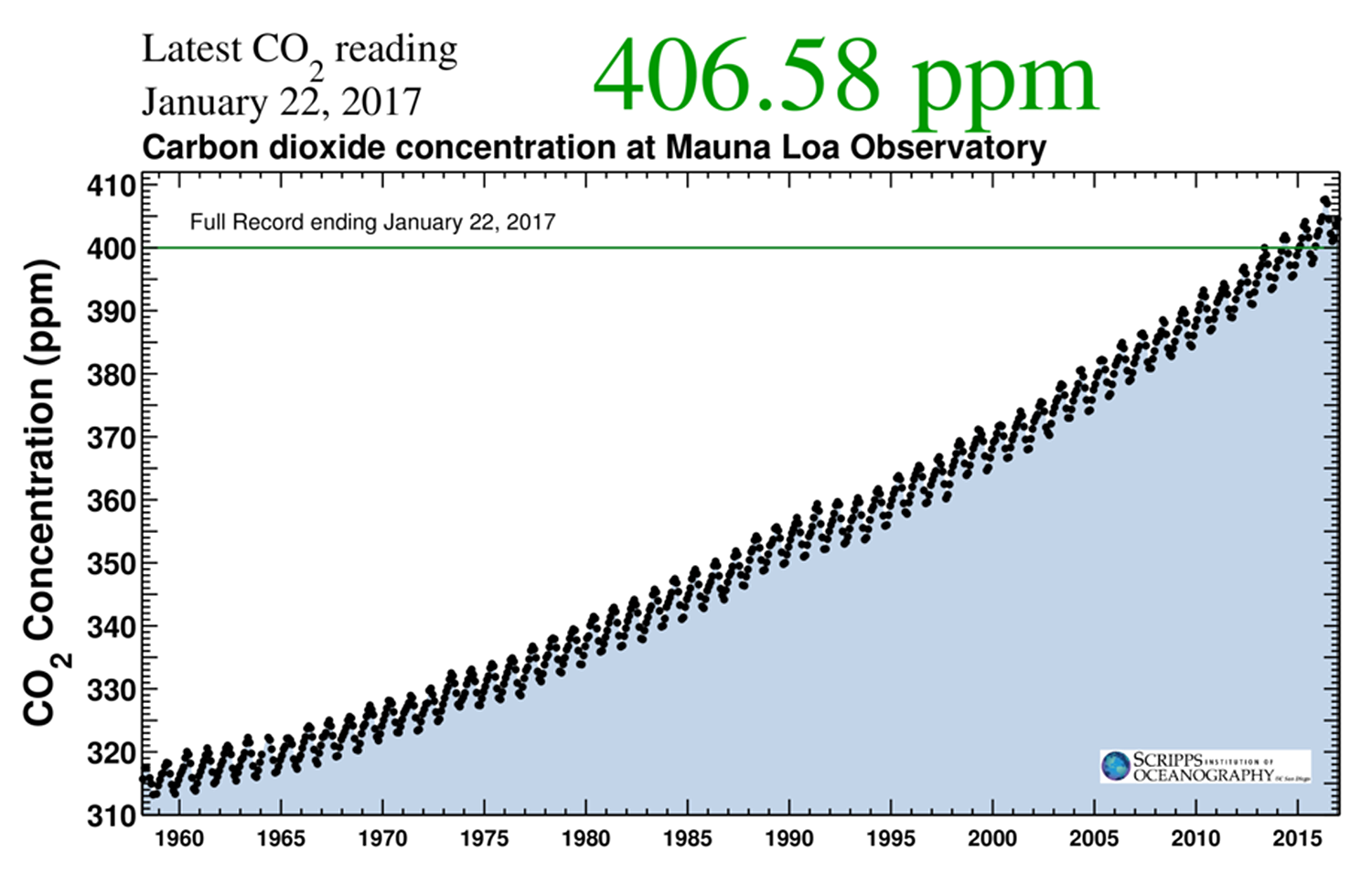
Studies
find that decision making starts being impaired when CO2 concentration corss 1000ppm threshold. Most currently made CO2 detectors start beeping
at that concentration.
We eventually tracked this down to a failing building ventilation controller and got it fixed. But it peaked my interest in the subject.
This interest remained in background until we got the farm, and with it, a lot of appliances that burn stuff - wood stoves, gas stoves,
indoor propane heaters, etc. So I figure I measure the effect of all of this - but which sensor to buy?
Of course, this is a sensor, so the most important part should be accuracy, right? A casual review of a bunch of sensors on Amazon
produced sad, but not unexpected results - people sell a bunch of garbage that displays random numbers. For much of the air quality
appliances on the market, once they get into the hands on someone with the access to laboratory calibration equipment, that review is
usually negative.
Eventually I just bought an expensive "industrial-grade" device. This.
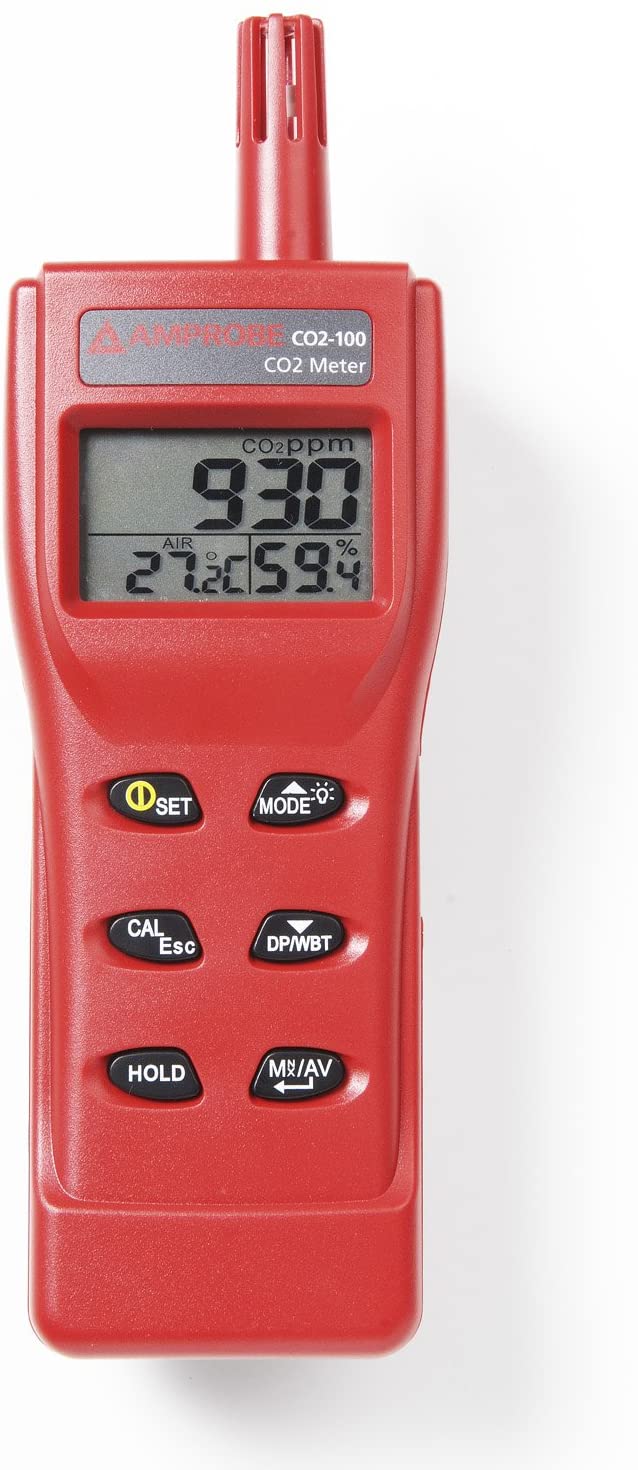
Using this little handheld device we made some spot measurements. The air in the car, even with the windows closed, is usually fine. The air in the
house, however, varies - and importantly, it was our Seattle house, which has no propane or wood burning, so we considered it safe. As it
turned out, we had grossly inadequate ventilation in our bedroom - the air was well above 1000ppm in the morning if the door was closed.
We learned to sleep with an open door or with an open window - but I also wanted a device that I can just leave on in the monitoring mode,
and the one we had did not have a power supply.
So I bought the stationary version of the same thing. This.
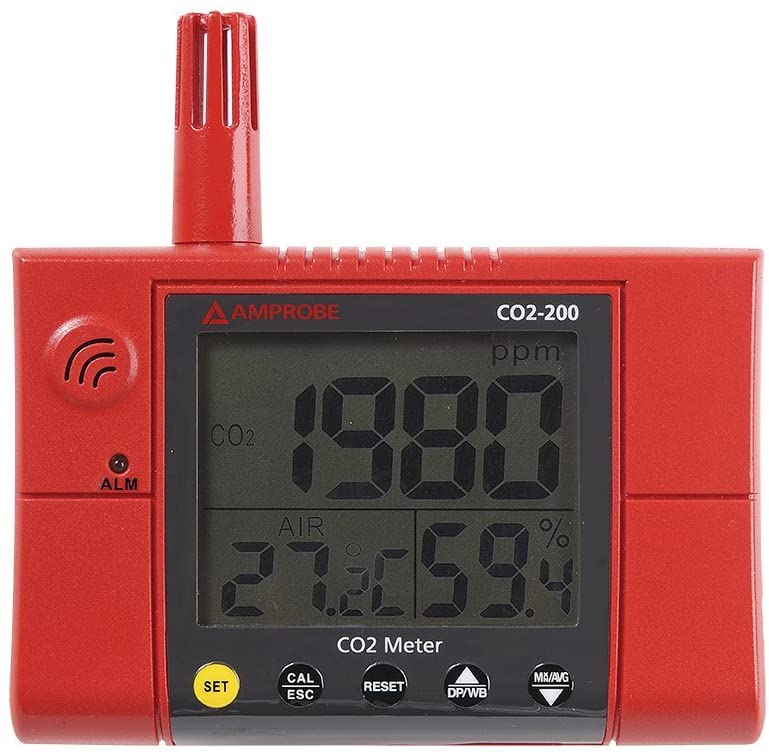
This device allowed us to debug our sleeping arrangements, but I also wanted to have it in our bedroom at the farm,
and in our office, and in our office at the farm, and in the living room, and I want to give it to the parents, and my wife's
parents, and the kids... and at $250 per, it started looking expensive.
So I started looking for alternatives. I ended up buying a few of different devices and calibrating them against each other.
If you read whatever information that typically accompanies a CO2 sensor sold at Amazon, you will discover that they are
supposed to be accurate within 50-70ppm. What exactly this 50-70 ppm means, I do not know. Is this a standard deviation?
A 95% confidence range? A 99% confidence range?
Here is what I discovered. Amprobe sensors - the expensive ones - all show exactly the same number. Always. I now have
4 or 5 of them, and I compared the readings to each other, and they are always the same. As you would expect from a
device that is twice the price of an average sensor.
All the rest of the sensors seem to be within the claimed 50-70ppm range. I bought one of this:
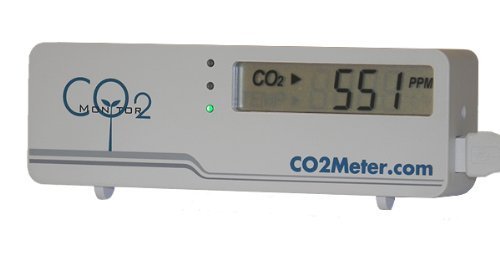
...and a lot (10? 12?) of these:
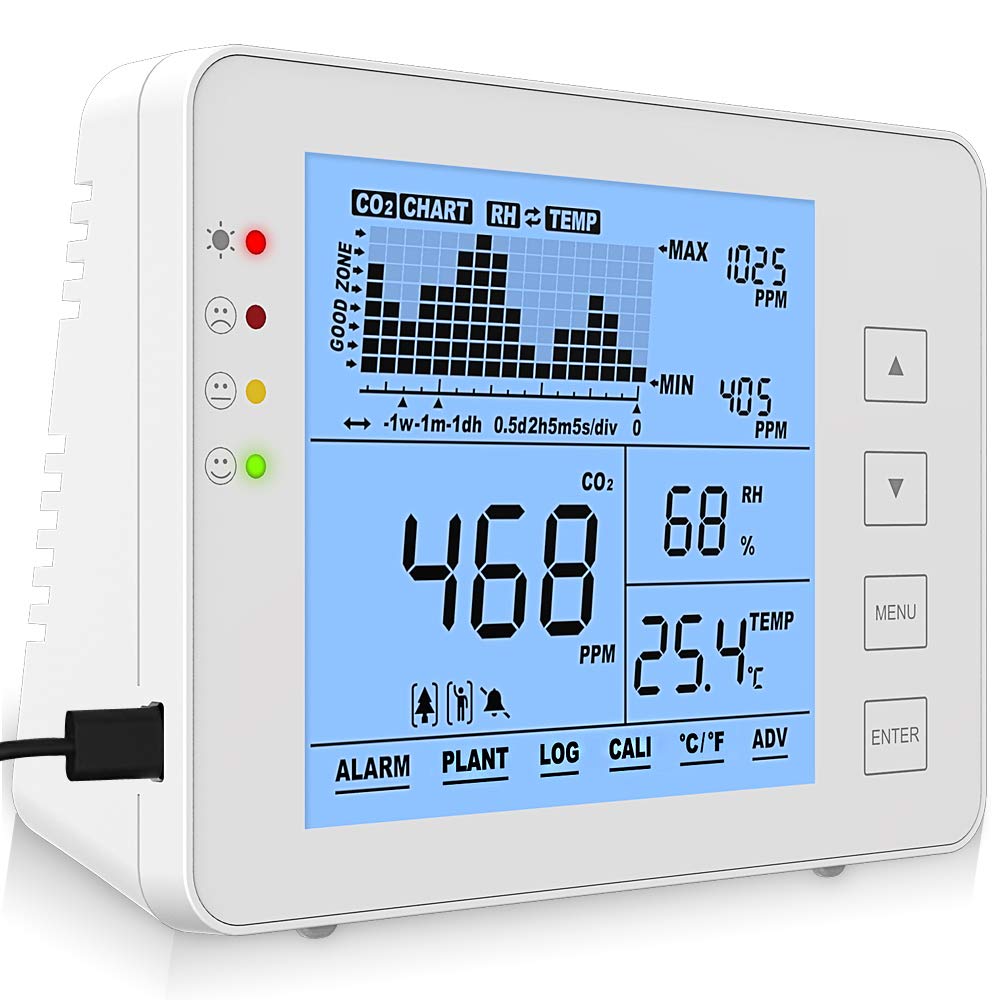
...because I liked the features.
When compared to each other and to the Amprobe "gold standard", they all were EVENTUALLY within 50-70ppm -
from each other, and from Amprobe. The features were different - they are obvious on the pictures - from the no-frills
CO2meter that just has one line display and no way to turn off the beeping without turning off the device - to the
really nice GZAir sensor with its historical chart, full configurability, and large display.
By the way, there is no way to turn off the sound on Amprobe either. For $250, it is super disappointing.
Eventually I ran into this thingy.
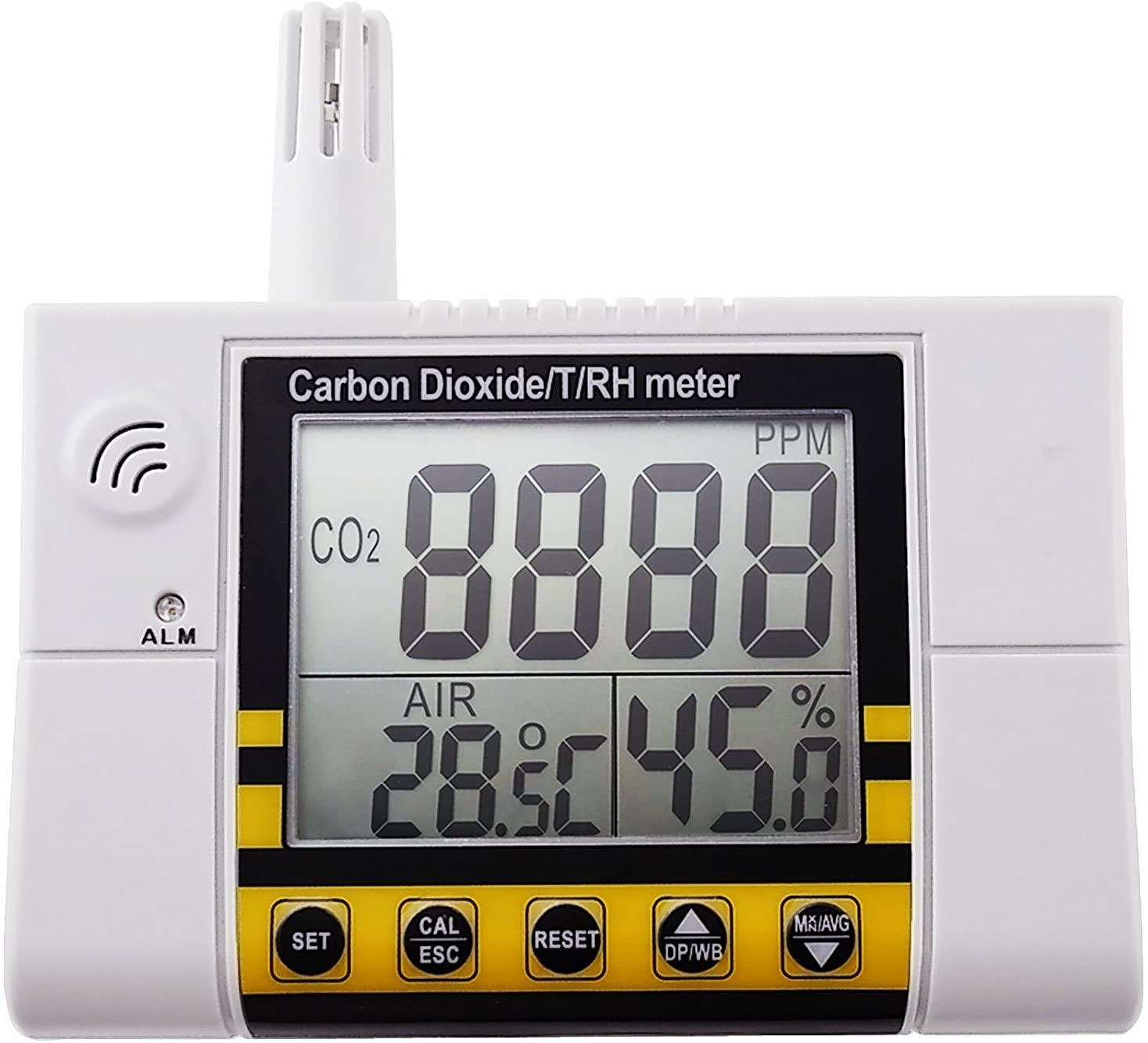
It looked remarkably similar to the Amprobe sensor, but $100 cheaper. So I bought one to test. What do you know? The readout
on this device was EXACTLY THE SAME as on all Amprobe sensors.
I suspect that this is an off-brand version of Amprobe device sold at a discount by whatever manufacturer that builds Amprobe
units. It is slightly different in capabilities - Amprobe CO2-200 has USB data link, whereas this has RS232 - just like
an older version of Amprobe device which still has some segments of its DNA imprinted in the documentation.
Because of accuracy, I ended up making the above the standard device I now buy for whatever area where I care to know
about CO2.
And now, the findings.
Lessons 1: CO2 goes into the unacceptable range (all sensors agree that it is 1000ppm and above - all sensors came with this
being an alarm range preconfigured) if two people sleep in a bedroom without central ventilation overnight. That's what we have
in Seattle - a ductless mini-split, as currently popular - and as it turned out, central ventilation is essential.
We have a central HVAC at our farm, and the air in the bedroom remains good throughout the night.
If you have a mini-split, or water circulation based heating - crack the window open overnight!
Lesson 2: 2 people in a medium sized (300-500sq ft) room can drive up CO2 concentration in this room. The same consideration
as with bedroom applies to the office.
Lesson 3: a very large company can make the sensors beep thoughout the house. We had just under 20 people at our place for
the New Year's Eve, and despite central ventilation system, the concentration of CO2 spiked.
Lesson 4: a gas range produces copious amounts of CO2 very quickly. Boiling a pot of water without turning the exhaust
fan in the range hood makes detectors go off at our entire house. I used to always forget to do it, now hellish beeping
from 4 detectors serves as a reminder.
Lesson 5. The ventless propane area heaters - those are terrible. I have one of those:
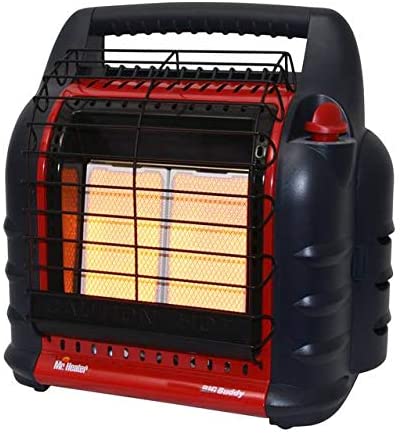
I turned it in a garage as I was working in it in the winter. In the space of a half an hour, CO2 concentration was through
the roof. in fact, this is the reason I decided to write this blog post - I was writing about propane heaters in
fault tolerant houses, used as a backup - and half of all propane heaters are ventless. JUST SAY NO!